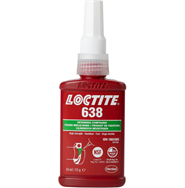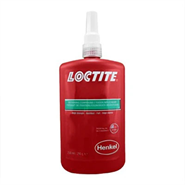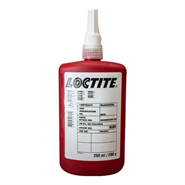Advantages & Benefits of Retaining Compounds
- Increased Strength: Enhances the load-bearing capacity of assemblies. They offer the ability to disassemble the component, and an even distribution of load and stress over the entire joint. simplified and less costly designs, and reduced dependence on machining tolerances.
- Improved Reliability: Reduces the chance of failures due to wear or vibration. They eliminate corrosion and fretting, and improve the durability of assembly.
- Simplified Designs - Cost and Time Saved: Allows for looser manufacturing tolerances, reducing machining costs. Applied as a liquid, they fill surface irregularities and provide 100% contact between mating metal surfaces, eliminating the need for expensive replacement parts, time consuming machining or the use of mechanical methods.
- Reduced Unplanned Downtime & Enhanced Machine Reliability: By effectively preventing cylindrical failures through uniform stress distribution and unitising the assembly, Loctite retaining compounds significantly enhance overall machine reliability and operational efficiency.
Loctite Retaining Compounds vs. Conventional Methods
- Surface Contact: Conventional methods achieve only 20-40% surface contact, leaving microscopic gaps, whereas Loctite retaining compounds fill 100% of microscopic gaps between mating parts.
- Load Distribution: Traditional methods lead to stress concentration at limited contact points, while Loctite retaining compounds ensure uniform stress distribution across the entire joint.
- Failure Prevention: Conventional methods are susceptible to fretting corrosion, loosening, and premature failure under dynamic loads, but Loctite retaining compounds eliminate movement, preventing fretting corrosion and significantly enhancing reliability and durability.
























